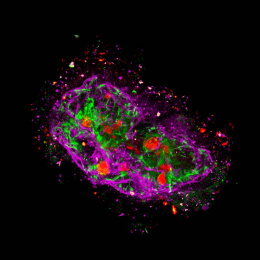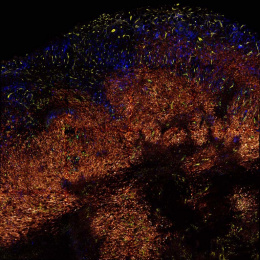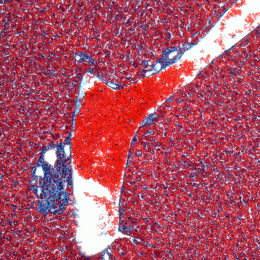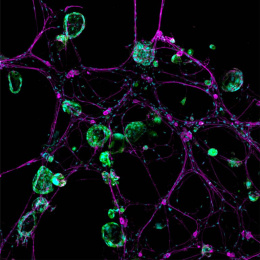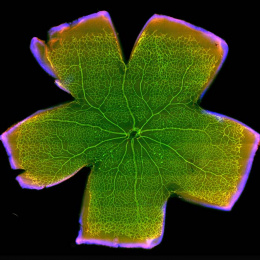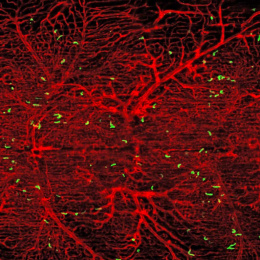Making Heads of Tails of Breast Cancer 1
Making Heads of Tails of Breast Cancer 1
Molly Wilson, Yun Zhang, Robert Weinberg, Jacqueline Lees
MIT Department of Biology, Koch Institute at MIT, Whitehead Institute
Primary tumors arising from any tissue type comprise a heterogenous population of cells. Within this population, only a subset of tumor cells maintains the ability to form a new tumor, and are referred to as tumor-initiating cells. These images are taken of breast cancer cells grown in a tissue culture dish. In the context of breast cancer, we have identified that some tumor cells harbor the ability to form primary cilia (the tail-like structures labeled in green), which act as scaffolds for molecular programs that drive tumor formation and progression. We also observe that some tumor cells maintain an epithelial appearance (meaning that they form adhesions with other cells, and are less migratory), and will stain positively for the epithelial marker E-cadherin (in red). However, other tumor cells gain a more mesenchymal appearance, meaning that they lose those cell adhesions (lose red staining), are more migratory, and are more likely to be able to metastasize to other organs in an in vivo setting. This loss of epithelial properties and gain of mesenchymal, migratory properties is referred to as the epithelial-mesenchymal transition (EMT). We want to understand the relationship between primary cilium-dependent programs and EMT in breast cancer formation and metastasis.

